Loading AI tools
Highest rank of the British Royal Navy From Wikipedia, the free encyclopedia
Admiral of the Fleet is a five-star naval officer rank and the highest rank of the Royal Navy, formally established in 1688.[1] The five-star NATO rank code is OF-10, equivalent to a field marshal in the British Army or a Marshal of the Royal Air Force. Apart from honorary appointments, no new admirals of the fleet have been named since 1995, and no honorary appointments have been made since 2014.
| Admiral of the Fleet | |
|---|---|
 The flag of an admiral of the Fleet is the Union Flag | |
 Insignia shoulder board and sleeve lace for Admiral of the Fleet | |
| Country | |
| Service branch | |
| Abbreviation | ADMF |
| Rank group | Flag officer |
| Rank | Five-star |
| NATO rank code | OF-10 |
| Formation | 1688 |
| Next higher rank | none |
| Next lower rank | Admiral |
| Equivalent ranks | |

The origins of the rank can be traced back to John de Beauchamp, 1st Baron Beauchamp de Warwick, who was appointed 'Admiral of the King's Southern, Northern and Western Fleets' on 18 July 1360.[2] The appointment gave the command of the English navy to one person for the first time; this evolved into the post of Admiral of the Fleet.[3] In the days of sailing ships the admiral distinctions then used by the Royal Navy included distinctions related to the fleet being divided into three divisions – red, white, or blue. Each division was assigned at least one admiral, who in turn commanded a number of vice-admirals and rear admirals. While the full admirals were nominally equals, tradition gave precedence to the Admiral of the White who held the fleet rank in addition to his substantive role.[1]
The Restoration era brought a general reorganisation of naval ranks and structure, including formalisation of the admiral of the fleet role. In a break with tradition the rank was awarded to the most senior Admiral of the Red, who retained this substantive rank while also serving as Admiral of the Fleet. Appointments were for life, remunerated via a £5 daily stipend and an annual allowance of £1,014 for the hiring and maintenance of servants. It was intended that only one officer would hold the rank at any time, with their presence aboard any naval vessel to be denoted by the flying of the Royal Standard from the main mast.[4]
The ranks of Admiral of the Fleet and Admiral of the Red were formally separated from 1805, with an announcement in the London Gazette that "His Majesty [has] been pleased to order the Rank of Admirals of the Red to be restored"[5] in His Majesty's Navy..." as a separate role. The same Gazette promoted 22 men to that rank.[6] From the nineteenth century onward there were also occasional variations to the previous requirement that only one Admiral of Fleet could serve at one time. In 1821 George IV appointed Sir John Jervis as a second admiral of the fleet, to balance the Duke of Wellington's promotion as a second Field Marshal in the British Army. In 1830 King William IV increased the number of admirals of the fleet to three, though these additional lifetime postings subsequently lapsed. Between 1854 and 1857 there was no admiral of the fleet at all as the most senior naval officer of the time – Admiral of the Red Thomas Le Marchant Gosselin – was mentally ill and had not served at sea for forty-five years.[7][8] In deference to Gosselin's seniority the position was instead left vacant until his death in 1857, whereupon it was filled by Admiral Charles Ogle.[4]
The organisation of the British fleet into coloured squadrons was abandoned in 1864, though the rank of admiral of the fleet was maintained. The title of First Naval Lord was renamed First Sea Lord in 1904.[9]
During the two World Wars a number of serving officers held active commissions as admirals of the fleet, as well as the First Sea Lord—e.g. Sir John Tovey.[10]
Prince Philip, Duke of Edinburgh was created an Admiral of the Fleet in the Royal New Zealand Navy in 1954, following the coronation of his wife Elizabeth II as Queen. This promotion was to a New Zealand rank, separate from the Royal Navy rank.[11]
Following the creation of the Chief of the Defence Staff in 1959, the five naval officers appointed to that position became admirals of the fleet. Recognizing the reduced post–Cold War size of the British Armed Forces, no further appointments were made to the rank after 1995 when Sir Benjamin Bathurst was appointed admiral of the fleet on his retirement as First Sea Lord. The rank was not abolished and in 2012 the Prince of Wales (now King Charles III) became an honorary admiral of the fleet (as well as field marshal and marshal of the Royal Air Force), in recognition of his support to Queen Elizabeth II in her role of as Commander-in-Chief of the British Armed Forces. In 2014, Lord Boyce, a former First Sea Lord and Chief of the Defence Staff, was also appointed an honorary admiral of the fleet.[12]
| Appointed | Image | Name | Born | Died | Notes | Reference |
|---|---|---|---|---|---|---|
| 24 September 1688 |  | George Legge (later The Lord Dartmouth) | 1647 | 1691 | [13] | |
| 30 May 1690 |  | Edward Russell (later The Earl of Orford) | 1652 | 1727 | [14] | |
| 28 April 1696 |  | Sir George Rooke | 1650 | 1709 | circa | [15] |
| 13 January 1705 | 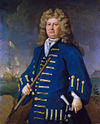 | Sir Cloudesley Shovell | 1650 | 1707 | [16] | |
| 8 January 1708 |  | Sir John Leake | 1656 | 1720 | [17] | |
| 21 December 1708 |  | Sir Stafford Fairborne | 1666 | 1742 | circa | [18] |
| 12 November 1709 |  | Sir Matthew Aylmer (later The Lord Aylmer) | 1650 | 1720 | [19] | |
| 14 March 1718 |  | Sir George Byng (later The Viscount Torrington) | 1663 | 1733 | [20] | |
| 20 February 1734 |  | Sir John Norris | 1670 | 1749 | [21] | |
| 1 July 1749 |  | Sir Chaloner Ogle | 1681 | 1750 | [22] | |
| 22 November 1751 |  | James Steuart | 1690 | 1757 | [23] | |
| March 1757 |  | George Clinton | 1686 | 1761 | [24] | |
| 30 July 1761 | 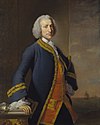 | The Lord Anson | 1697 | 1762 | [25] | |
| 17 December 1762 | 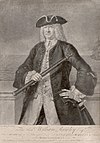 | Sir William Rowley | 1690 | 1768 | circa | [26] |
| 15 January 1768 |  | Sir Edward Hawke (later The Lord Hawke) | 1705 | 1781 | [27] | |
| 24 October 1781 |  | John Forbes | 1714 | 1796 | [28] | |
| 12 March 1796 |  | The Earl Howe | 1726 | 1799 | [29] | |
| 16 September 1799 |  | Sir Peter Parker, Bt. | 1721 | 1811 | [30] | |
| 24 December 1811 |  | King William IV | 1765 | 1837 | Lord High Admiral of the United Kingdom 1827–1828 appointed at that time as The Duke of Clarence and St Andrews | [31] |
| 19 July 1821 |  | The Earl of St Vincent | 1735 | 1823 | acting from May 1814 | [32] |
| 28 June 1830 |  | William Williams-Freeman | 1742 | 1832 | [33] | |
| 22 July 1830 | 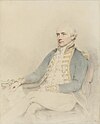 | The Lord Gambier | 1756 | 1833 | [34] | |
| 22 July 1830 |  | Sir Charles Pole, Bt. | 1757 | 1830 | [34] | |
| 24 April 1833 |  | Sir Charles Nugent | 1759 | 1844 | [35] | |
| 8 January 1844 |  | Sir James Hawkins-Whitshed | 1762 | 1849 | [36] | |
| 9 November 1846 |  | Sir George Martin | 1764 | 1847 | [37] | |
| 13 October 1849 |  | Sir Thomas Byam Martin | 1773 | 1854 | [38] | |
| 1 July 1851 |  | Sir George Cockburn (later the Cockburn Baronet) | 1772 | 1853 | [39] | |
| 8 December 1857 | 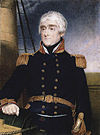 | Sir Charles Ogle, Bt. | 1775 | 1858 | [40] | |
| 25 June 1858 |  | Sir John West | 1774 | 1862 | [41] | |
| 20 May 1862 |  | Sir William Gage | 1777 | 1864 | [42] | |
| 10 November 1862 |  | Sir Graham Hamond, Bt. | 1779 | 1862 | [43] | |
| 27 April 1863 |  | Sir Francis Austen | 1774 | 1865 | [44] | |
| 27 April 1863 | 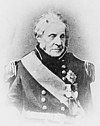 | Sir William Parker, Bt. | 1781 | 1866 | [45] | |
| 11 January 1864 |  | Sir Lucius Curtis | 1786 | 1869 | [46] | |
| 12 September 1865 |  | Sir Thomas Cochrane | 1789 | 1872 | [47] | |
| 30 November 1866 |  | Sir George Seymour | 1787 | 1870 | [48] | |
| 30 January 1868 | 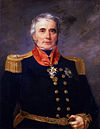 | Sir James Gordon | 1782 | 1869 | on the Retired List | [49] |
| 15 January 1869 |  | Sir William Bowles | 1780 | 1869 | [50] | |
| 2 July 1869 |  | Sir George Sartorius | 1790 | 1885 | [51] | |
| 21 January 1870 |  | Sir Fairfax Moresby | 1786 | 1877 | [52] | |
| 20 October 1872 |  | Sir Houston Stewart | 1791 | 1875 | [53] | |
| 11 December 1875 | 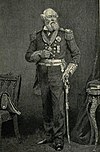 | Sir Provo Wallis | 1791 | 1892 | [54] | |
| 22 January 1877 |  | Sir Henry Codrington | 1808 | 1877 | [55] | |
| 5 August 1877 | 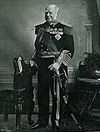 | Sir Henry Keppel | 1809 | 1904 | [56] | |
| 27 December 1877 | 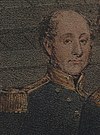 | The Earl of Lauderdale | 1803 | 1878 | [57] | |
| 27 December 1877 |  | Sir Rodney Mundy | 1805 | 1884 | [57] | |
| 15 June 1879 | 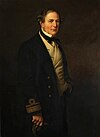 | Sir James Hope | 1808 | 1881 | [58] | |
| 15 June 1879 |  | Sir Thomas Symonds | 1813 | 1894 | [58] | |
| 10 June 1881 |  | Sir Alexander Milne, Bt. | 1806 | 1896 | on the Retired List | [59] |
| 1 December 1881 |  | Sir Charles Elliot | 1818 | 1895 | [60] | |
| 29 April 1885 |  | Sir Alfred Ryder | 1820 | 1888 | [61] | |
| 18 July 1887 |  | King Edward VII | 1841 | 1910 | Honorary appointment to non-Navy royalty and at that time The Prince of Wales | [62] |
| 1 May 1888 |  | Sir Geoffrey Hornby | 1825 | 1895 | [63] | |
| 8 December 1888 |  | Lord John Hay | 1827 | 1916 | First Sea Lord 1886 | [64] |
| 2 August 1889 |  | Emperor William II | 1859 | 1941 | Honorary, to foreign royalty | [65] |
| 13 February 1892 |  | Sir John Commerell | 1829 | 1901 | [66] | |
| 3 June 1893 |  | The Duke of Edinburgh (later The Duke of Saxe-Coburg and Gotha) | 1844 | 1900 | [67] | |
| 20 February 1895 |  | The Earl of Clanwilliam | 1832 | 1907 | [68] | |
| 23 August 1897 |  | Sir Algernon Lyons | 1833 | 1908 | [69] | |
| 29 November 1898 | 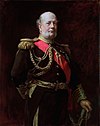 | Sir Frederick Richards | 1833 | 1912 | First Sea Lord 1893–1899 | [70] |
| 13 January 1899 |  | Sir Nowell Salmon | 1835 | 1912 | [71] | |
| 3 October 1902 | 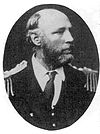 | Sir James Erskine | 1838 | 1911 | [72] | |
| 30 August 1903 |  | Sir Charles Hotham | 1843 | 1925 | [73] | |
| 16 June 1904 |  | Lord Walter Kerr | 1839 | 1927 | First Sea Lord 1899–1904 | [74] |
| 20 February 1905 |  | Sir Edward Seymour | 1840 | 1929 | [75] | |
| 5 December 1905 | 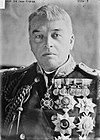 | Sir John Fisher (later The Lord Fisher) | 1841 | 1920 | First Sea Lord 1905–1910 and 1914–1915 | [76] |
| 1 March 1907 |  | Sir Arthur Wilson | 1842 | 1921 | First Sea Lord 1910–1911 | [77] |
| 11 June 1908 |  | Tsar Nicholas II of Russia | 1868 | 1918 | Honorary, to foreign royalty | [78] |
| 2 December 1908 |  | Sir Gerard Noel | 1845 | 1918 | [79] | |
| 27 January 1910 |  | Prince Henry of Prussia | 1862 | 1929 | Honorary, to foreign royalty | [80] |
| 30 April 1910 | 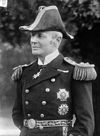 | Sir Arthur Fanshawe | 1847 | 1936 | [81] | |
| 6 May 1910 | 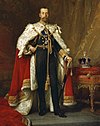 | King George V | 1865 | 1936 | [82] | |
| 20 March 1913 | 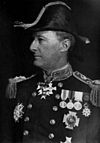 | Sir William May | 1849 | 1930 | [83] | |
| 5 March 1915 | 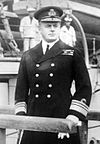 | Sir Hedworth Meux | 1856 | 1929 | [84] | |
| 2 April 1917 |  | Sir George Callaghan | 1852 | 1920 | [85] | |
| 3 April 1919 |  | The Viscount Jellicoe (later The Earl Jellicoe) | 1859 | 1935 | First Sea Lord 1916–1918 | [86] |
| 3 April 1919 | 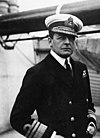 | Sir David Beatty (later The Earl Beatty) | 1871 | 1936 | First Sea Lord 1919–1927 | [87] |
| 31 July 1919 |  | Sir Henry Jackson | 1855 | 1929 | First Sea Lord 1915–1916 | [88] |
| 1 November 1919 |  | Sir Rosslyn Wemyss (later The Lord Wester Wemyss) | 1864 | 1933 | First Sea Lord 1918–1919 | [89] |
| 24 November 1920 | 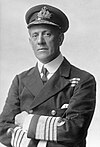 | Sir Cecil Burney (later the Burney baronet) | 1858 | 1929 | [90] | |
| 5 July 1921 | 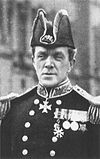 | Sir Doveton Sturdee, Bt. | 1859 | 1925 | [91] | |
| 19 August 1921 |  | The Marquess of Milford Haven | 1854 | 1921 | First Sea Lord 1912–1914. On the Retired List | [92] |
| 31 July 1924 |  | Sir Charles Madden, Bt. | 1862 | 1935 | First Sea Lord 1927–1930 | [93] |
| 8 May 1925 |  | Sir Somerset Gough-Calthorpe | 1864 | 1937 | [94] | |
| 24 November 1925 |  | Sir John de Robeck, Bt. | 1862 | 1928 | [95] | |
| 21 January 1928 | 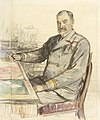 | Sir Henry Oliver | 1865 | 1965 | [96] | |
| 31 July 1929 | 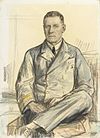 | Sir Osmond Brock | 1869 | 1947 | [97] | |
| 8 May 1930 |  | Sir Roger Keyes, Bt. (later The Lord Keyes) | 1872 | 1945 | [98] | |
| 21 January 1933 |  | Sir Frederick Field | 1871 | 1945 | First Sea Lord 1930–1933 | [99] |
| 31 July 1934 |  | Sir Reginald Tyrwhitt, Bt. | 1870 | 1951 | [100] | |
| 8 May 1935 | 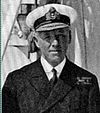 | Sir Ernle Chatfield (later The Lord Chatfield) | 1873 | 1967 | First Sea Lord 1933–1938 | [101] |
| 21 January 1936 |  | King Edward VIII | 1894 | 1972 | [102] | |
| 12 July 1936 | Sir John Kelly | 1871 | 1936 | [103] | ||
| 11 December 1936 |  | King George VI | 1895 | 1952 | [104] | |
| 21 January 1938 |  | The Earl of Cork and Orrery | 1873 | 1967 | [105] | |
| 7 July 1939 |  | Sir Roger Backhouse | 1878 | 1939 | First Sea Lord 1938–1939 | [106] |
| 31 July 1939 |  | Sir Dudley Pound | 1877 | 1943 | First Sea Lord 1939–1943 | [107] |
| 8 May 1940 |  | Sir Charles Forbes | 1880 | 1960 | [108] | |
| 21 January 1943 |  | Sir Andrew Cunningham (later The Viscount Cunningham of Hyndhope) | 1883 | 1963 | First Sea Lord 1943–1946 | [109] |
| 22 October 1943 |  | Sir John Tovey (later The Lord Tovey) | 1885 | 1971 | [110] | |
| 8 May 1945 |  | Sir James Somerville | 1882 | 1949 | [111] | |
| 21 January 1948 |  | Sir John Cunningham | 1885 | 1965 | First Sea Lord 1946–1948 | [112] |
| 22 October 1948 |  | The Lord Fraser of North Cape | 1888 | 1981 | First Sea Lord 1948–1951 | [113] |
| 20 March 1949 |  | Sir Algernon Willis | 1889 | 1976 | [114] | |
| 22 April 1952 |  | Sir Arthur Power | 1889 | 1960 | [115] | |
| 1 June 1952 |  | Sir Philip Vian | 1894 | 1968 | [116] | |
| 15 January 1953 | 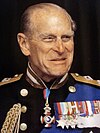 | The Duke of Edinburgh | 1921 | 2021 | Lord High Admiral of the United Kingdom 2011–2021 | [117][118] |
| 1 May 1953 |  | Sir Rhoderick McGrigor | 1893 | 1959 | First Sea Lord 1951–1955 | [119] |
| 22 April 1955 | 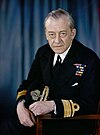 | Sir George Creasy | 1895 | 1972 | [120] | |
| 22 October 1956 |  | The Earl Mountbatten of Burma | 1900 | 1979 | First Sea Lord 1955–1959 Chief of the Defence Staff 1959–1965 | [121] |
| 10 May 1960 | Sir Charles Lambe | 1900 | 1960 | First Sea Lord 1959–1960 | [122] | |
| 23 May 1962 | Sir Caspar John | 1903 | 1984 | First Sea Lord 1960–1963 | [123] | |
| 12 August 1968 | Sir Varyl Begg | 1908 | 1995 | First Sea Lord 1966–1968 | [124] | |
| 30 June 1970 | Sir Michael Le Fanu | 1913 | 1970 | First Sea Lord 1968–1970 | [125] | |
| 12 March 1971 |  | Sir Peter Hill-Norton (later The Lord Hill-Norton) | 1915 | 2004 | First Sea Lord 1970–1971 Chief of the Defence Staff 1971–1973 | [126] |
| 1 March 1974 |  | Sir Michael Pollock | 1916 | 2006 | First Sea Lord 1971–1974 | [127] |
| 9 February 1977 | Sir Edward Ashmore | 1919 | 2016 | First Sea Lord 1974–1977 Chief of the Defence Staff 1977 | [128] | |
| 6 July 1979 | Sir Terence Lewin (later The Lord Lewin) | 1920 | 1999 | First Sea Lord 1977–1979 Chief of the Defence Staff 1979–1982 | [129] | |
| 1 December 1982 | Sir Henry Leach | 1923 | 2011 | First Sea Lord 1979–1982 | [130] | |
| 2 August 1985 | 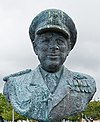 | Sir John Fieldhouse (later The Lord Fieldhouse) | 1928 | 1992 | First Sea Lord 1982–1985 Chief of the Defence Staff 1985–1988 | [131][132] |
| 12 April 1988 |  | King Olav V of Norway | 1903 | 1991 | Honorary, to foreign royalty | [133] |
| 25 May 1989 | Sir William Staveley | 1928 | 1997 | First Sea Lord 1985–1989 | [134] | |
| 2 March 1993 | Sir Julian Oswald | 1933 | 2011 | First Sea Lord 1989–1993 | [135] | |
| 10 July 1995 |  | Sir Benjamin Bathurst | 1936 | Living | First Sea Lord 1993–1995 | [136] |
| 16 June 2012 |  | King Charles III | 1948 | Living | Lord High Admiral of the United Kingdom since 2022 Honorary appointment and at that time The Prince of Wales Assumed the rank in full capacity on the day following accession to the throne. | [137] |
| 13 June 2014 |  | The Lord Boyce | 1943 | 2022 | First Sea Lord 1998–2001 Chief of the Defence Staff 2001–2003. Honorary rank | [138] |
Seamless Wikipedia browsing. On steroids.
Every time you click a link to Wikipedia, Wiktionary or Wikiquote in your browser's search results, it will show the modern Wikiwand interface.
Wikiwand extension is a five stars, simple, with minimum permission required to keep your browsing private, safe and transparent.